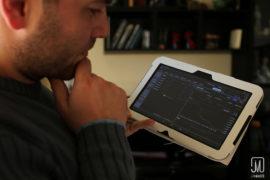
‘Where to do see yourself five years from now?’
Most of us have come across this favorite HR question in at least one interview of our life. What if you asked this same question to businesses a few years back? Would they include a highly digitalized infrastructure in their answer?
Maybe yes. Or Maybe no.
Although digitization is the new mantra that the world at large is chanting, many important aspects of life are still surprisingly untouched by it. AP automation is certainly a case in point. While you would expect businesses to instantly warm up to the idea of a more efficient, automated system, statistics begs to differ. For instance, the United States has a lot of catching up to do in the context of an automated B2B payment. Many surveys show that a large number of US companies still prefer the traditional paper checks over their electronic counterparts. But things are changing fast, and not without government intervention. This is also pointing at an evolving system to deal with payments methods. AP automation surely has seen worse days. Here’s a brief recap of how the accounting system experienced a major technological change over the years.
Claim up to $26,000 per W2 Employee
- Billions of dollars in funding available
- Funds are available to U.S. Businesses NOW
- This is not a loan. These tax credits do not need to be repaid
The Pre-AP Automation Period
Any idea how many business invoices are processed every year? The 2014 Billentis report puts it at 170 billion. Now imagine the time, effort and resources spent on processing that many business invoices. Plus, the errors that can easily infest the process. A risky affair, to say the least, isn’t it? Companies from all across the world were engaged in this ‘risky’ business before their ‘savior’, AP automation, made an appearance. There is little wonder that the Accounts Department were always under a huge performance pressure from the beginning to the end of a month. Paying off the vendors and tallying the balance sheet while battling a mess that data entry mistakes hurled them in were an everyday thing for them. Added to these were the issues of fraud, which left the Accounts department breathless.
But don’t make the mistake of thinking that such a Herculean effort was rewarded with a THANK YOU note. Nope, not when these were inundated with errors. In case the vendors were not paid right on time, the relationship turned bitter and that affected the image of the company.
Accounting Mistakes
Although accounting mistakes are expensive for any organization, the smaller ones feel the impact even more. With a limited resource at their disposal, they obviously cannot afford to go wrong, quite literally. If they pay more to a vendor they suffer a financial loss and if they pay less, the company loses its clients.
While companies can avoid these mistakes by adopting an automated system, you must try to avoid the following accounting mistakes if you are yet to go digital:
If you do not know your financial stand, running a company will be risky. Therefore, not staying on top of your payables is a mistake that you must amend. Update all your invoices and automate the payment system to overcome the errors.
Not keeping a track of paper receipts is yet another problem that companies must avoid. Piles of invoices keep flowing in throughout the month and keeping a track of all those paper bills is a problem. Missing out one of them delays the payment and that is harmful for the brand image.
While manual accounting process is a tedious job, errors make it more so. Even a single error means a lot of re-work. Since it is humanly impossible to guarantee an error-free system, the only way out is switching to a digitized system to deal with categorizing and totaling figures.
The Shift: Why Businesses opted For Automation
All these mistakes put immense pressure on the credibility of a company and it affected the profit center. Automation in accounting system hence emerged as the savior. It aligned itself to the company goals and helped the Accounts department cut down the excess expenditure and generate as much revenue as possible.
Following are a few ways in which AP automation has benefited an organization:
For companies looking for ‘financial intelligence’, AP automation was one of the primary ingredients of their strategy. It improved real-time visibility so that accounting operations could be monitored daily without any manual labor. Enterprises could practice data-driven management in their everyday affairs. The cloud feature has further improved an end-to-end control over the invoice processing cycle. Hence, companies could take faster and smarter decisions, saving up to several thousands of dollars every day.
For B2B organizations, increase in the business scale meant more and more vendors. This indicated more paperwork and invoices. Also, the cost of invoice processing went up, and with manual feature, productivity plummeted. Automation presented a hopeful alternative. It saved businesses from such a decline because the software could capture invoices in any format, extracted data and carried out relevant actions. AP automation even cut cycle time from 20–30 days to just a few days, avoiding the payment penalties. This even boosted productivity and increased the profit margin by five percent.
The first impact of invoice errors fell on the company-vendors relationship. Late payment, mistakes in calculations, no discounts and the likes were mistakes that AP automation could easily bypass. Since organizations could trace and secure all information, there were hardly any chances of missing any deadline.
Therefore, this shift from manual to automatic invoice processing saved up to 90 percent of a company’s expenses while making the process more accurate and efficient.
Why You Need A Strategic Accounting System
Making a progress in the back office has encouraged companies to take up the latest work flow management tools, and automation of account payable is one of the keys to achieve that goal. In 2016, this software will focus more on analyzing the financial information and deliver solutions for better budgeting, planning and forecasting. The efficiency achieved will provide greater visibility to the movement of fund and cash management will be comprehensive. Experts predict that the AP system will work in collaboration with the procurement segment to achieve business agility.
Despite the US government’s instruction to install accounts payable automation by the end of the financial year 2018, the rate of adoption is still slow. President Obama has even taken a Supplier Pay Initiative in November 2014, which pledged the larger organizations to pay their small suppliers fast and provide them a financing solution to access working capital at a lower cost. Automation of AP has a long way to go and even if the adoption rate is slow, companies have realized the value of this technology. It is only natural that the installation will grow gradually because nobody wants to let go of profit.



